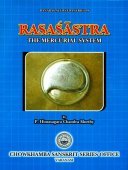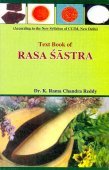Shrinivasa, Shri-nivasa, Śrīnivāsa: 15 definitions
Introduction:
Shrinivasa means something in Hinduism, Sanskrit, the history of ancient India. If you want to know the exact meaning, history, etymology or English translation of this term then check out the descriptions on this page. Add your comment or reference to a book if you want to contribute to this summary article.
The Sanskrit term Śrīnivāsa can be transliterated into English as Srinivasa or Shrinivasa, using the IAST transliteration scheme (?).
Images (photo gallery)
In Hinduism
Vastushastra (architecture)
Source: Wisdom Library: Vāstu-śāstraŚrīnivāsa (श्रीनिवास) refers to a type of temple (prāsāda) classified, according to Samarāṅgaṇasūtradhāra chapter 57. The temple is mentioned as one of the nine temples being a favorite of Bhagavatī. The Samarāṅgaṇasūtradhāra is an 11th-century encyclopedia dealing with various topics from the Vāstuśāstra.

Vastushastra (वास्तुशास्त्र, vāstuśāstra) refers to the ancient Indian science (shastra) of architecture (vastu), dealing with topics such architecture, sculpture, town-building, fort building and various other constructions. Vastu also deals with the philosophy of the architectural relation with the cosmic universe.
Natyashastra (theatrics and dramaturgy)
Source: archive.org: The Ragas Of Karnatic MusicŚrīnivāsa (श्रीनिवास).—Among northern authors, Śrīnivāsa Paṇḍita in his Rāgatattva-vibodha (18th-century) says that a meḷa (melā) is a group of notes revealing the rāga. The meḷa is of three kinds, viz.,

Natyashastra (नाट्यशास्त्र, nāṭyaśāstra) refers to both the ancient Indian tradition (shastra) of performing arts, (natya—theatrics, drama, dance, music), as well as the name of a Sanskrit work dealing with these subjects. It also teaches the rules for composing Dramatic plays (nataka), construction and performance of Theater, and Poetic works (kavya).
Vyakarana (Sanskrit grammar)
Source: Wikisource: A dictionary of Sanskrit grammarŚrīnivāsa (श्रीनिवास).—A grammarian who has written a commentary on the Paribhasabhaskara of Haribhaskara.

Vyakarana (व्याकरण, vyākaraṇa) refers to Sanskrit grammar and represents one of the six additional sciences (vedanga) to be studied along with the Vedas. Vyakarana concerns itself with the rules of Sanskrit grammar and linguistic analysis in order to establish the correct context of words and sentences.
Chandas (prosody, study of Sanskrit metres)
Source: Shodhganga: a concise history of Sanskrit Chanda literature1) Śrīnivāsa (श्रीनिवास) (son of Lakṣmī and Veṅkaṭeśa).—Though the identification of Śrīnivāsa, author of Prastāraśekhara and other works are available to us, the time of the author is yet to be traced. Śrīnivāsa was the son of Lakṣmī and Veṅkaṭa(nāyaka). He belonged to Kauśikagotra and Vājasaneyaśākhā of the Śuklayajurveda. Śrīnivāsa had composed one more text on Sanskrit Prosody namely Vṛttamaṇimālā. His other works include Lokoktiśatakadvaya, Vaijayantīkośa, Śrīnivāsacampū, Saprakāratārāvalī, Sāhityasūkṣmasaraṇī, Sumanorañjanakāvya and Hariharastuti. The author says about his work that it should achieve victory in the name of Prastāraśekhara, as it describes the techniques of prastāra and nothing more can be defined than this.
2) Śrīnivāsa (श्रीनिवास) or Śrīmuṣṇaṃ Śrīnivāsa Kavi of Vīravallī family is the author of the Vṛttālaṅkāramālikā. He is the son of Varada Deśika alias Varada Nārāyaṇaguru of Kauṇḍinyagotra and great-grandfather of Veṅkaṭavarada.

Chandas (छन्दस्) refers to Sanskrit prosody and represents one of the six Vedangas (auxiliary disciplines belonging to the study of the Vedas). The science of prosody (chandas-shastra) focusses on the study of the poetic meters such as the commonly known twenty-six metres mentioned by Pingalas.
Shilpashastra (iconography)
Source: Shodhganga: The significance of the mūla-beras (śilpa)Śrīnīvāsa is the name of a deity depicted at the Kallazhagar Temple in Madurai, which represents a sacred place for the worship of Viṣṇu.—Śrīnīvāsa is represented as standing in vaiṣṇava sthānaka with four hands. The upper hands hold the discus and the conch in kartarīmukha-hasta. The lower right hand is in varada-hasta and lower left hand in urū hasta. While representing in dance, Śrīnīvāsa is represented as standing in samapāda-sthānaka where the upper hands hold kartarīmukha and the lower right hand is in patāka inverted and the lower left hand is in ardhacandra-hasta placed on the left thigh. The wives of Śrīnīvāsa are Lakṣmī and Bhūmīdevī.

Shilpashastra (शिल्पशास्त्र, śilpaśāstra) represents the ancient Indian science (shastra) of creative arts (shilpa) such as sculpture, iconography and painting. Closely related to Vastushastra (architecture), they often share the same literature.
Yoga (school of philosophy)
Source: Brill: Śaivism and the Tantric Traditions (yoga)Śrīnivāsa (श्रीनिवास) is the author of the Haṭharatnāvalī, a 17th-century text on Haṭhayoga consisting of 404 verses.—A good example of a more scholarly extended work is the Haṭharatnāvalī, which was composed by Śrīnivāsa. At the beginning of the first chapter, he presents himself as a learned writer by informing the reader that he is an eminent astrologer who excels in the Vedas, Vedānta, the works of Patañjali, Vyākaraṇa, Tantra, Sāṅkhya, Nyāya, Vaiśeṣika, as well as various other texts and philosophies. [...] In particular, his list of eighty-four āsanas appears to have been the creation of a scholar who felt compelled to elaborate on references to this canonical number of postures in early works, such as the Dattātreyayogaśāstra and the Vivekamārtaṇḍa. In fact, Śrīnivāsa’s list of eighty-four names of postures is precededand followed by verses of the Vivekamārtaṇḍa and the Haṭhapradīpikā, which state that Śiva taught eighty-four āsanas.

Yoga is originally considered a branch of Hindu philosophy (astika), but both ancient and modern Yoga combine the physical, mental and spiritual. Yoga teaches various physical techniques also known as āsanas (postures), used for various purposes (eg., meditation, contemplation, relaxation).
India history and geography
Source: Shodhganga: a concise history of Sanskrit Chanda literature (history)Śrīnivāsa (श्रीनिवास) is the teacher of Śambhurāma Miśra (18th century): son of Sītārāma and credited with a metrical text named Chandomuktāvalī. Śambhurāma mentions one Hariguru in his invocatory verse, who probably was his preceptor. He was a Brahmin by caste and belonged to Kāśyapagotra. He was also a devotee of Lord Hayagrīva. He mentions about his gotra, name of his father in the end of the work and the name of his preceptor in colophon. He says with full of devotion that the work is dedicated to Lord Hayagrīva and the learned mass should relish the metrical testimony from it.

The history of India traces the identification of countries, villages, towns and other regions of India, as well as mythology, zoology, royal dynasties, rulers, tribes, local festivities and traditions and regional languages. Ancient India enjoyed religious freedom and encourages the path of Dharma, a concept common to Buddhism, Hinduism, and Jainism.
Languages of India and abroad
Sanskrit dictionary
Source: DDSA: The practical Sanskrit-English dictionaryŚrīnivāsa (श्रीनिवास).—epithets of Viṣṇu.
Derivable forms: śrīnivāsaḥ (श्रीनिवासः).
Śrīnivāsa is a Sanskrit compound consisting of the terms śrī and nivāsa (निवास). See also (synonyms): śrīniketana.
Source: Cologne Digital Sanskrit Dictionaries: Shabda-Sagara Sanskrit-English DictionaryŚrīnivāsa (श्रीनिवास).—m.
(-saḥ) Vishnu. E. śrī the goddess, and nivāsa abode.
Source: Cologne Digital Sanskrit Dictionaries: Cappeller Sanskrit-English DictionaryŚrīnivāsa (श्रीनिवास).—[masculine] the same (receptacle or abode of Śrī).
Source: Cologne Digital Sanskrit Dictionaries: Aufrecht Catalogus Catalogorum1) Śrīnivāsa (श्रीनिवास) as mentioned in Aufrecht’s Catalogus Catalogorum:—Adhikaraṇamīmāṃsā mīm.
2) Śrīnivāsa (श्रीनिवास):—Abhinavavṛttaratnākaraṭippaṇa. Alaṃkārakaustubha. Kāvyadarpaṇa. Chandovṛtti.
3) Śrīnivāsa (श्रीनिवास):—Upādhikhaṇḍanaṭippaṇī, vedānta.
4) Śrīnivāsa (श्रीनिवास):—Kalpadīpikā jy. See Dīpikā. Sahamakalpalatā jy.
5) Śrīnivāsa (श्रीनिवास):—Kāvyasārasaṃgraha.
6) Śrīnivāsa (श्रीनिवास):—Kṛṣṇarājagadya. Kṛṣṇarājaprabhāvodaya.
7) Śrīnivāsa (श्रीनिवास):—Gāyatrīmāhātmya.
8) Śrīnivāsa (श्रीनिवास):—Gosvāmyaṣṭaka.
9) Śrīnivāsa (श्रीनिवास):—pupil of Satyanātha: Tattvasaṃgraha, vedānta. Satyanidhivilāsa, kāvya.
10) Śrīnivāsa (श्रीनिवास):—pupil of Niyamānanda, guru of Puruṣottamaprasāda (Śrutyantasuradruma): Nigada. Hall. p. 204. Vedabhāṣya. Quoted by Devarāja in Nighaṇṭubhāṣya p. 4. 104. 161. 177. 415. 440.
11) Śrīnivāsa (श्रीनिवास):—
—[commentary] on Jayatīrtha’s Nyāyasudhā. See Brahmasūtrānuvyākhyāna. Prameyamuktāvalī, a
—[commentary] on Jayatīrtha’s Tattvaprakāśikā. Bhāgavatatātparyaprakāśa, a
—[commentary] on Ānandatīrtha’s Bhāgavatatātparyanirṇaya. Bhāvacandrikā, a
—[commentary] on Ānandatīrtha’s Mahābhāratatātparyanirṇaya.
—[commentary] on Jayatīrtha’s Māyāvādakhaṇḍanavivaraṇa. Vādārthadīpikā, a
—[commentary] on Jayatīrtha’s Viṣṇutattvanirṇayadīpikā. He quotes Raghūttama and Vedeśa.
12) Śrīnivāsa (श्रीनिवास):—of the Kauśika race: Nyāsatilaka and—[commentary], bhakti.
13) Śrīnivāsa (श्रीनिवास):—Paribhāṣābhāskaraṭīkā [grammatical]
14) Śrīnivāsa (श्रीनिवास):—Prameyatattvabodha [nyāya]
15) Śrīnivāsa (श्रीनिवास):—Rāgatattvavibodha, music.
16) Śrīnivāsa (श्रीनिवास):—Lakṣmīsvayaṃvara nāṭaka.
17) Śrīnivāsa (श्रीनिवास):—Śatadūṣaṇī, vedānta.
18) Śrīnivāsa (श्रीनिवास):—Śrīnivāsacampū.
19) Śrīnivāsa (श्रीनिवास):—Śleṣacūḍāmaṇi. Sāhityasūkṣmasaraṇi.
20) Śrīnivāsa (श्रीनिवास):—Sadācārasaṃgraha.
21) Śrīnivāsa (श्रीनिवास):—Sāradīpikā, vedānta.
22) Śrīnivāsa (श्रीनिवास):—Siddhāntacintāmaṇi.
23) Śrīnivāsa (श्रीनिवास):—Siddhāntaśikṣā and—[commentary].
24) Śrīnivāsa (श्रीनिवास):—Saugandhikavivaraṇavyākhyā.
25) Śrīnivāsa (श्रीनिवास):—Haṭharatnāvalī, yoga.
26) Śrīnivāsa (श्रीनिवास):—son of Anantaya: Nyāyasiddhāntamañjarī vaiś.
27) Śrīnivāsa (श्रीनिवास):—guru of Nirmalācārya (Dvaitasiddhi).
28) Śrīnivāsa (श्रीनिवास):—Karaṇaprakāśaṭīkā Prabhā.
29) Śrīnivāsa (श्रीनिवास):—Prakāśa on Jayatīrtha’s Vādāvalī. Stavapañcakamāhātmya.
30) Śrīnivāsa (श्रीनिवास):—son of Śrīniketana: Śivārcanacandrikā.
31) Śrīnivāsa (श्रीनिवास):—Laghustavarāja.
32) Śrīnivāsa (श्रीनिवास):—Aṣṭaślokīṭīkā.
33) Śrīnivāsa (श्रीनिवास):—Gosvāmināṃ Guṇaleśavarṇanam.
34) Śrīnivāsa (श्रीनिवास):—Drāhyāyaṇagṛhyasūtraṭīkā Subodhinī.
35) Śrīnivāsa (श्रीनिवास):—Bhaktiviveka.
36) Śrīnivāsa (श्रीनिवास):—Prakāśa on Ānandatīrtha’s Bhāgavatatātparyanirṇaya.
37) Śrīnivāsa (श्रीनिवास):—Vaibhavaprakāśikā stotra.
38) Śrīnivāsa (श्रीनिवास):—Setudarpaṇa, a C. on the Setubandha.
39) Śrīnivāsa (श्रीनिवास):—son of Timmaya: Abhijñānaśākuntalaṭīkā.
40) Śrīnivāsa (श्रीनिवास):—son of Rāmānuja: Lakṣmīsvayaṃvara nāṭaka.
Source: Cologne Digital Sanskrit Dictionaries: Monier-Williams Sanskrit-English Dictionary1) Śrīnivāsa (श्रीनिवास):—[=śrī-nivāsa] [from śrī] m. abode of Śrī, [Kāvya literature]
2) [v.s. ...] Name of Viṣṇu, [Chandomañjarī; Bhāgavata-purāṇa]
3) [v.s. ...] Name of various authors and other men (also with ācārya, kavi, dīkṣita, bhaṭṭa etc.), [Catalogue(s)]
4) Śrīnivāsā (श्रीनिवासा):—[=śrī-nivāsā] [from śrī-nivāsa > śrī] f. Name of Rādhā, [Pañcarātra]
5) Śrīnivāsa (श्रीनिवास):—[=śrī-nivāsa] [from śrī] m. or n. (?) the resin of Pinus Longifolia, [cf. Lexicographers, esp. such as amarasiṃha, halāyudha, hemacandra, etc.] (also saka, [Caraka])
Source: Cologne Digital Sanskrit Dictionaries: Yates Sanskrit-English DictionaryŚrīnivāsa (श्रीनिवास):—[śrī-nivāsa] (saḥ) 1. m. Idem.
[Sanskrit to German]
Sanskrit, also spelled संस्कृतम् (saṃskṛtam), is an ancient language of India commonly seen as the grandmother of the Indo-European language family (even English!). Closely allied with Prakrit and Pali, Sanskrit is more exhaustive in both grammar and terms and has the most extensive collection of literature in the world, greatly surpassing its sister-languages Greek and Latin.
Kannada-English dictionary
Source: Alar: Kannada-English corpusŚrīnivāsa (ಶ್ರೀನಿವಾಸ):—
1) [noun] Viṣṇu, in whom Lakṣmi resides.
2) [noun] an abode of wealth.
Kannada is a Dravidian language (as opposed to the Indo-European language family) mainly spoken in the southwestern region of India.
See also (Relevant definitions)
Partial matches: Shri, Nivasa.
Starts with (+13): Shrinivasa acarya, Shrinivasa atiratrayajin, Shrinivasa bhatta, Shrinivasa dikshita, Shrinivasa kavi, Shrinivasa mahitapaniya, Shrinivasa makhin, Shrinivasa rajayogeshvara, Shrinivasa sudhi, Shrinivasa vedantacarya, Shrinivasa-sundaraja, Shrinivasabrahmatantraparakalasvamyashtottarashata, Shrinivasacampu, Shrinivasacarya, Shrinivasachampu, Shrinivasadasa, Shrinivasadhyana, Shrinivasadikshitiya, Shrinivasadipika, Shrinivasagadya.
Ends with: Badhula shrinivasa, Jayashrinivasa.
Full-text (+297): Shrinivasacampu, Shriniketana, Shuddhidipika, Shrinivasadikshitiya, Shrinivasadipika, Shrinivasatirthiya, Shrinivasamahatmya, Shrinivasadasa, Shrinivasashishya, Shrinivasaraghava, Shrinivasabrahmatantraparakalasvamyashtottarashata, Shrinivasakavacantastotra, Sahityasukshmasarani, Shrinivasiya, Shrinilaya, Suratasimha, Shrinida, Anandarangavijayacampu, Shrinivasa acarya, Shridhara.
Relevant text
Search found 42 books and stories containing Shrinivasa, Shri-nivasa, Śrī-nivāsa, Sri-nivasa, Śrī-nivāsā, Śrīnivāsa, Srinivasa, Śrīnivāsā; (plurals include: Shrinivasas, nivasas, nivāsas, nivāsās, Śrīnivāsas, Srinivasas, Śrīnivāsās). You can also click to the full overview containing English textual excerpts. Below are direct links for the most relevant articles:
A History of Indian Philosophy Volume 3 (by Surendranath Dasgupta)
Part 4 - Rāmānuja Literature < [Chapter XVIII - An Historical and Literary Survey of the Viśiṣṭādvaita School of Thought]
Part 21 - Śaila Śrīnivāsa < [Chapter XX - Philosophy of the Rāmānuja School of Thought]
Part 1 - Teachers and Pupils of the Nimbārka School < [Chapter XXI - The Nimbārka School of Philosophy]
Srila Gurudeva (The Supreme Treasure) (by Swami Bhaktivedanta Madhava Maharaja)
Finding Śrīmatī Rādhārāṇī’s Nose Ring < [Chapter 2.2 - Śrīman Mahāprabhu’s Greatest Donation]
Siddha Śarīra Symptoms < [Chapter 2.4 - The Uttamā Bhāgavata and Kṛpa-Pātra]
The Skanda Purana (by G. V. Tagare)
Chapter 18 - The Glory of Śrī Veṅkaṭeśvara < [Section 1 - Veṅkaṭācala-māhātmya]
Chapter 23 - Great Efficacy of Cakratīrtha < [Section 1 - Veṅkaṭācala-māhātmya]
Chapter 9 - The Story of Hunter Vasu: The Greatness of Padmasaras < [Section 1 - Veṅkaṭācala-māhātmya]
Jnaneshwari (Bhavartha Dipika) (by Ramchandra Keshav Bhagwat)
Verse 16.9 < [Chapter 16 - Daivasura-sampad-vibhaga-yoga]
Verse 16.2 < [Chapter 16 - Daivasura-sampad-vibhaga-yoga]
Chaitanya Bhagavata (by Bhumipati Dāsa)
Verse 2.23.23 < [Chapter 23 - Wandering about Navadvīpa On the Day the Lord Delivered the Kazi]
Verse 2.21.34 < [Chapter 21 - The Lord’s Chastisement of Devānanda]
Verse 3.5.72 < [Chapter 5 - The Pastimes of Nityānanda]
Greetings to ‘Triveni’ < [July-August 1933]
A Letter to the Editors < [November 1939]
To The Dear Departed < [April – June, 2005]
Related products





